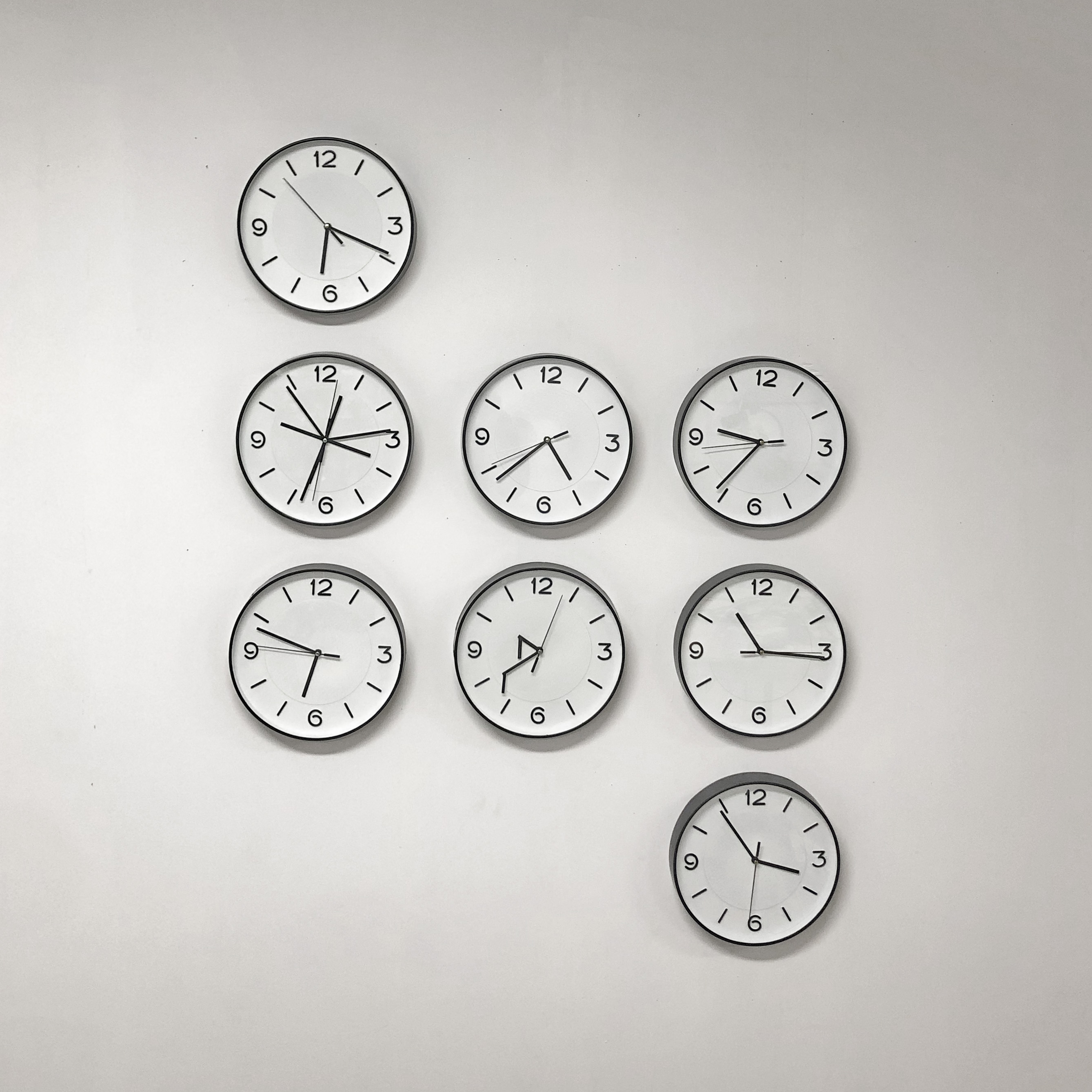Clocks Against Time
2024. Variable dimensions. Modified dollar store wall clocks, electronics.
Clocks rule our lives, even when they are absent from view. A clock tells us that Time only moves in one unalterable direction, that it’s continuity is the result of compounding equal, objectively-measured durations. A clock says: Time is running out, Time is money. Each clock whispers a lie, in direct contradiction to the lessons of contemporary physics and subjective experience.
In contrast, 𝘾𝙡𝙤𝙘𝙠𝙨 𝘼𝙜𝙖𝙞𝙣𝙨𝙩 𝙏𝙞𝙢𝙚 presents a series of clocks redesigned against their primary function of consistent synchronization and display of passing time. Each clock is subjected to a hand-made intervention in its underlying mechanics: a clock ticking in reverse, clocks with odd-numbered or modified handles, clocks that tick slightly faster or slightly slower, clocks that choose a new time of day every 60 seconds.
These are not broken clocks, famously “Right Twice a Day”. Rather, 𝘾𝙡𝙤𝙘𝙠𝙨 𝘼𝙜𝙖𝙞𝙣𝙨𝙩 𝙏𝙞𝙢𝙚 are designed to never be correct, remaining consistently unreliable.

From top left to bottom right:
(9% Faster Clock)
(Multiple Choice Clock)
(Reverse Arrow Clock)
(2% Slower Clock)
(Any Time You’d Like Clock)
(20% faster Clock)
(Tired Clock Affected by Gravity)
(One Must Imagine Sisyphus Happy Clock)
Photos and video by Adam Basanta